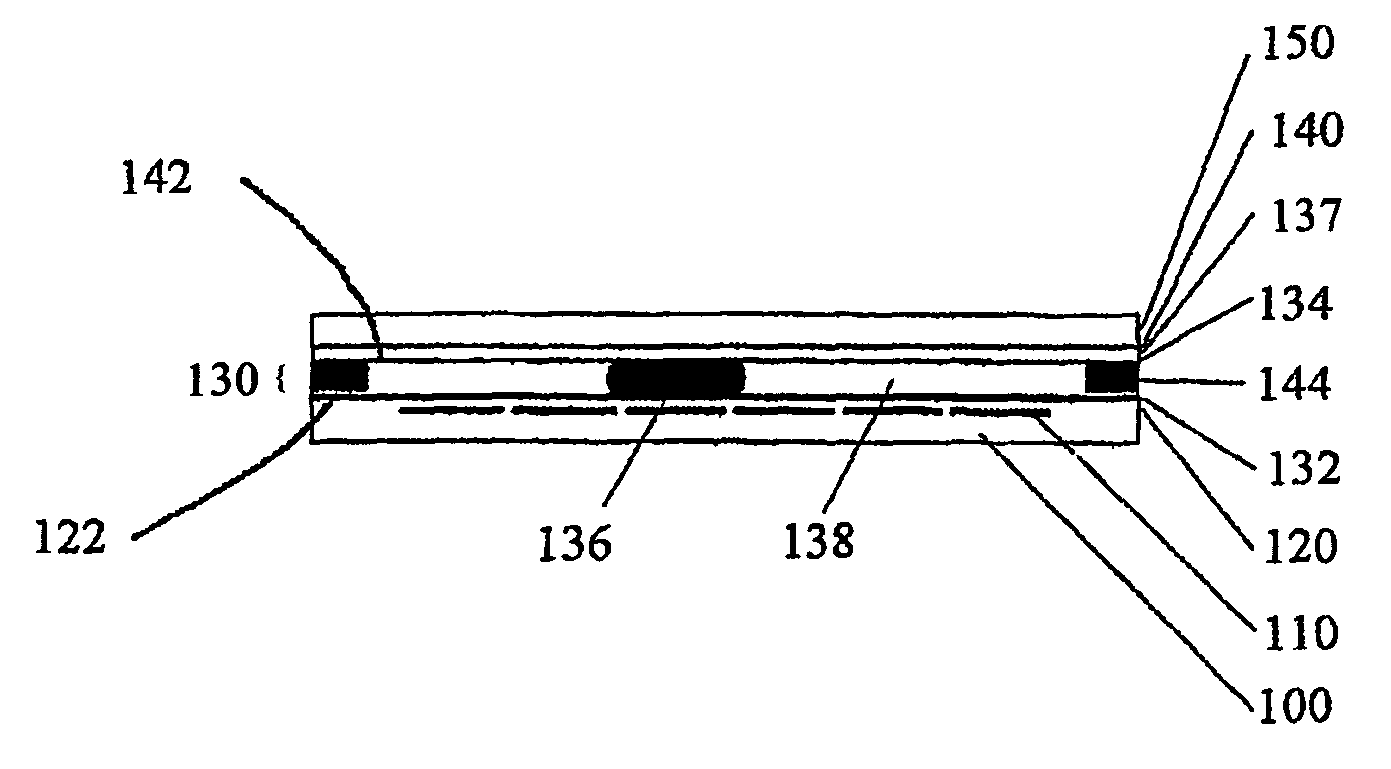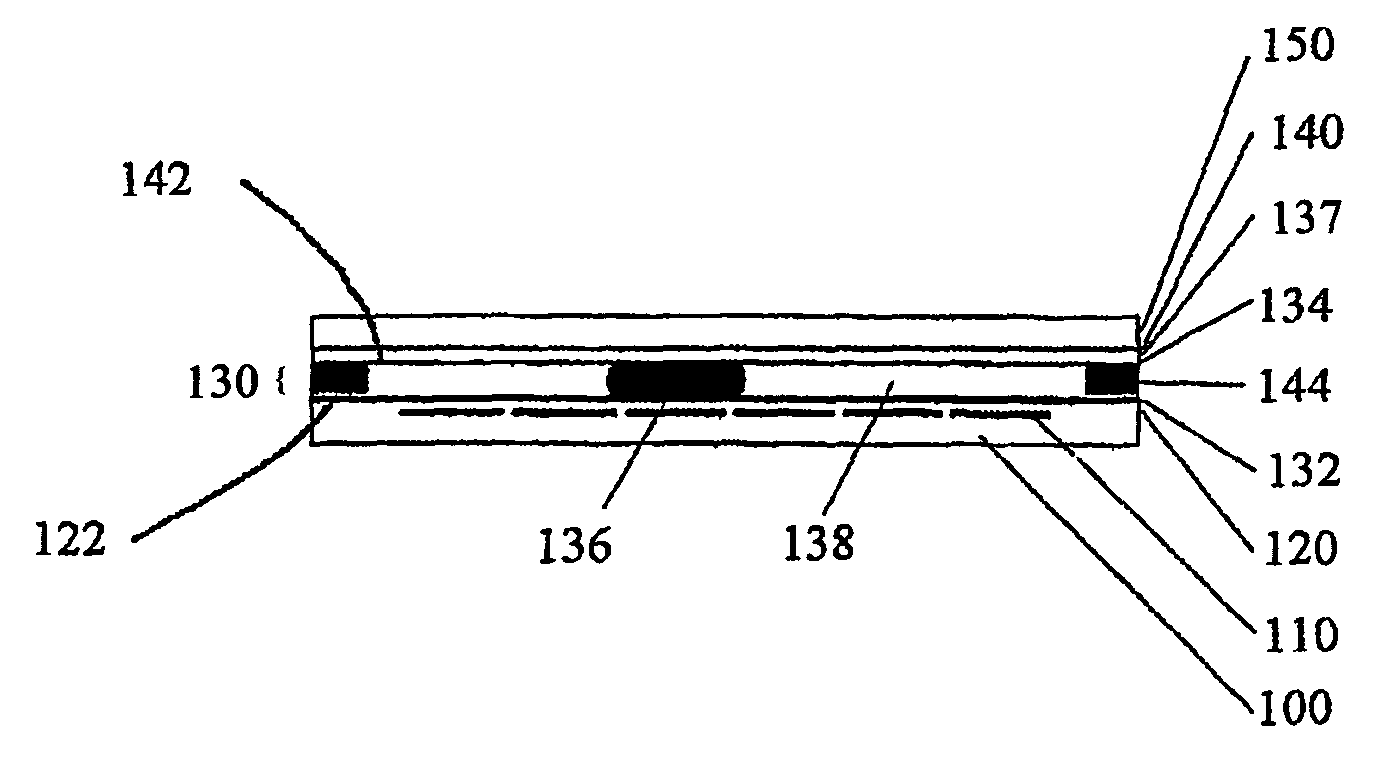Layer composition of an electrowetting system
a technology of electrowetting system and layer composition, which is applied in the direction of electrolysis components, solid separation, lamination, etc., can solve the problems of reducing the permittivity value, so as to and increase the permittivity value
- Summary
- Abstract
- Description
- Claims
- Application Information
AI Technical Summary
Benefits of technology
Problems solved by technology
Method used
Image
Examples
Embodiment Construction
[0026]If in the description, a layer is described as being “on” another layer, it is meant to be directly adjacent to it. If a layer is arranged “over” another layer, one or more layers may be interposed.
[0027]According to the drawing FIGURE, the layer system is built of cells, each having a carrier 100 made of a transparent insulating material. Therein, the thickness of the carrier 100 is based on the expected mechanical stresses or the intended use with the minimum thickness possibly being 5 μm, and the maximum thickness several millimeters. On the carrier 100, an electrode layer 110 is disposed the structuring of which is chosen according to the intended embodiment. On the electrode layer 110, an insulator layer 120 is disposed which is made of a material with a high permittivity of at least 20 according to the invention. Over the insulation layer 120, a repellent layer 132 is disposed, with an interposed adhesion enhancing layer 122 providing good adhesion of the repellent layer...
PUM
| Property | Measurement | Unit |
|---|---|---|
| melting temperature | aaaaa | aaaaa |
| melting temperature | aaaaa | aaaaa |
| thickness | aaaaa | aaaaa |
Abstract
Description
Claims
Application Information
 Login to View More
Login to View More - R&D
- Intellectual Property
- Life Sciences
- Materials
- Tech Scout
- Unparalleled Data Quality
- Higher Quality Content
- 60% Fewer Hallucinations
Browse by: Latest US Patents, China's latest patents, Technical Efficacy Thesaurus, Application Domain, Technology Topic, Popular Technical Reports.
© 2025 PatSnap. All rights reserved.Legal|Privacy policy|Modern Slavery Act Transparency Statement|Sitemap|About US| Contact US: help@patsnap.com


